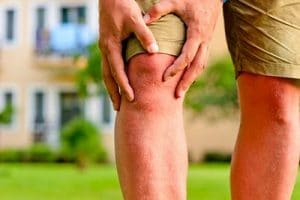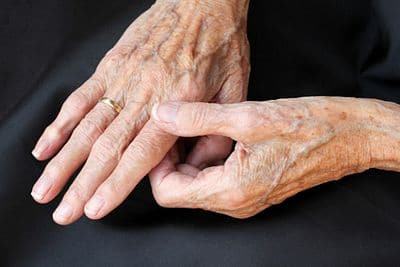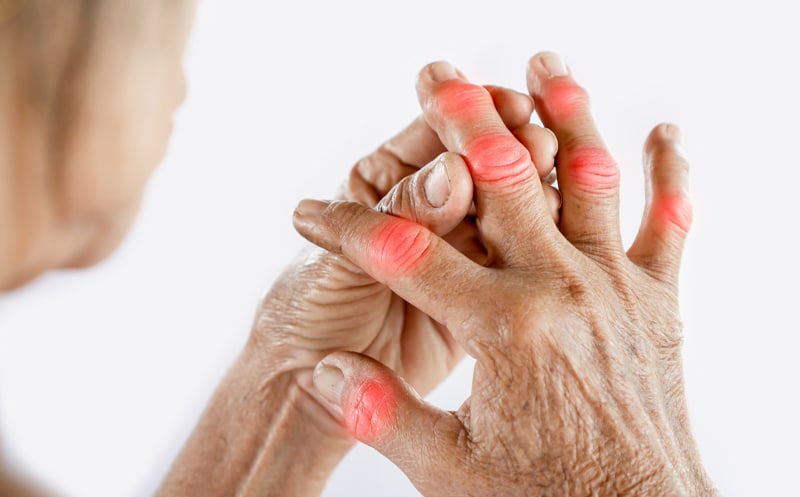Arthritis affects millions of people annually. Over a person’s lifetime, the protective cartilage surrounding the bones wears out, causing pain and decreased joint mobility. Osteoarthritis is the most common type of arthritis and affects over 30 million Americans. This common type of arthritis causes pain, decreased mobility, and tenderness. As patients age, the risk of osteoarthritis increases. The most common joints to develop osteoarthritis include the knees, hips, hands, lower back, and neck.
Osteoarthritis is arthritis pain that typically affects older adults and worsens with age. Conventional medicine has long held that wear and tear cause osteoarthritis; doctors primarily recommend weight loss as the treatment. Recent science has shown that inflammation is an integral part of the process. Ironically, the same NSAID drugs commonly prescribed for osteoarthritis can worsen inflammation. In contrast, there are nutrients that not only reduce pain as well as NSAIDs but may also slow the inflammatory process that makes arthritis worse.
Dr. Andrew Shiller’s Presentation on Reducing Pain without Drugs
Dr Andrew Shiller, an integrative medicine physician, shares some new insights into the modern understanding of osteoarthritis and how to reduce pain and slow inflammation without toxic drugs. Watch the webinar below to learn about natural treatment for osteoarthritis. Learn more about Dr Shiller’s approach to chronic pain management using an integrative and functional medicine approach. Dr. Shiller was trained in rehabilitation medicine at Harvard Medical School, emphasizing integrative pain management. Thousands of people have consulted with him after hitting a “dead end” in conventional treatment or treatment with complementary healing modalities. Dr. Shiller is an expert in understanding the patient’s particular clinical situation, values, and goals and guiding an integrative treatment plan for osteoarthritis. To learn more about Dr Shiller, click here.
Symptoms of Osteoarthritis
Osteoarthritis worsens over time and has numerous symptoms. These symptoms include-
- Pain, stiffness, and tenderness in the joints
- Loss of flexibility, a grating sensation in their joints and bone spurs
- Pain when you move the joint or afterward
- Tenderness when light pressure is applied to the joint
- Stiffness in the joint generally upon awakening or after long periods of inactivity or rest
- Loss of flexibility and lack of full range of motion in the joints
- Grating noise or experience a pop on joint movement
- Hard lumps in or around their joints. The lumps are bone spurs or tiny bits of bone that have fragmented away from the joint.
Causes & Risk Factors of Osteoarthritis
Each bone has cartilage on the end of it. When the cartilage begins to deteriorate, osteoarthritis occurs. The cartilage provides a smooth surface for frictionless movement. The cartilage becomes rough as osteoarthritis occurs, resulting in pain and joint stiffness. If the cartilage completely deteriorates, the patient’s bone will rub against the bone. There are numerous risk factors when it comes to osteoarthritis. These include –
- Age—As you age, your chances of developing osteoarthritis increase.
- Sex—Although the reason is unknown, women are more likely than men to develop osteoarthritis.
- Bone problems—If your joints and cartilage are defective, you may be at an increased risk of developing osteoarthritis.
- Joint injuries from accidents or sports increase the chances of developing osteoarthritis.
- Obesity—Obese people have an increased risk of osteoarthritis and joint pain. Physicians believe that the extra weight in obese people puts additional pressure on the joints.
- Repetitive movements while working are also a risk factor.
Medical conditions such as diabetes, gout, Paget’s disease, and an underactive thyroid can increase the risk of osteoarthritis. Researchers speculate that the stress caused by these and other diseases can negatively impact the joints.
Diagnosis of Osteoarthritis
A thorough physical examination is the first step in diagnosing osteoarthritis. Your physician will examine the joint and determine 
Physicians may also use various lab tests to help diagnose osteoarthritis. Blood tests help rule out other medical conditions that may be causing the patient’s pain, such as cancer and rheumatoid arthritis. Finally, a physician may test fluid from a patient’s joint to help with diagnosis. For this test, a doctor will place a needle in the joint, draw a fluid sample, and send it to the laboratory.























